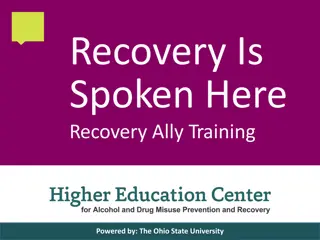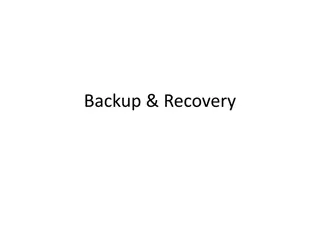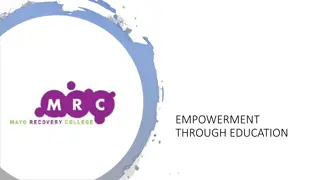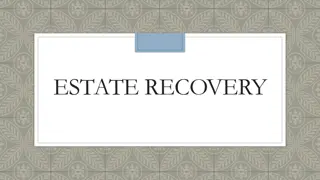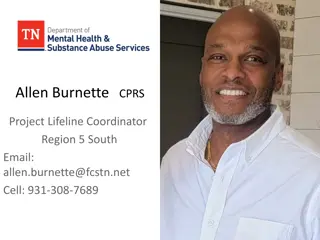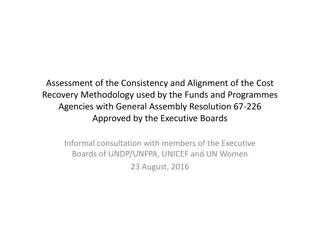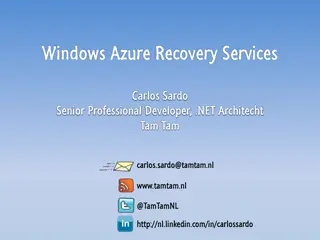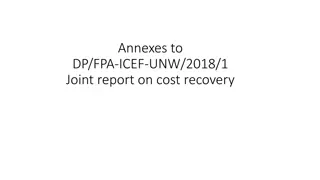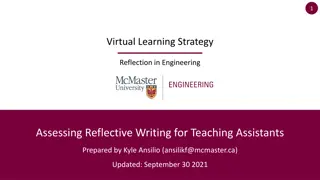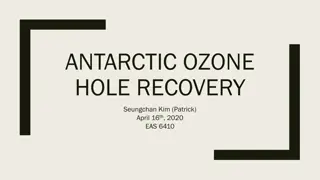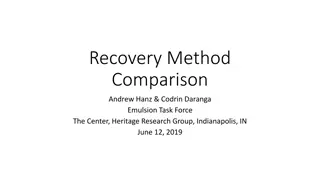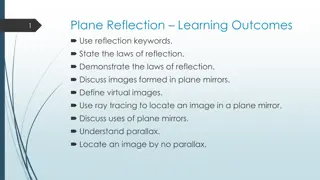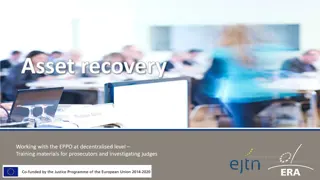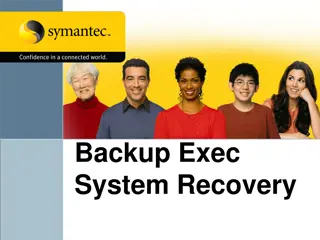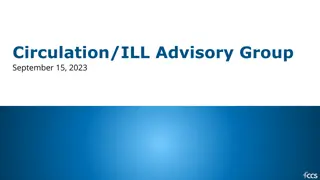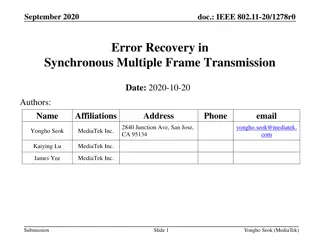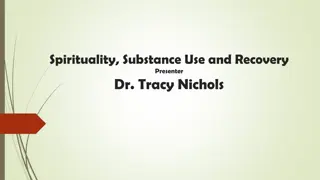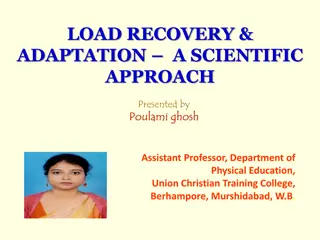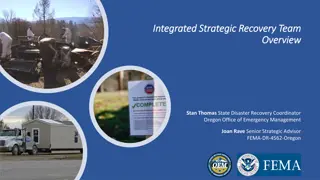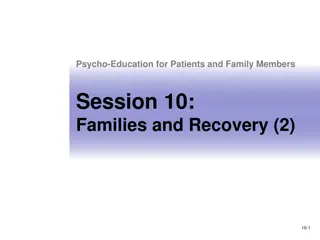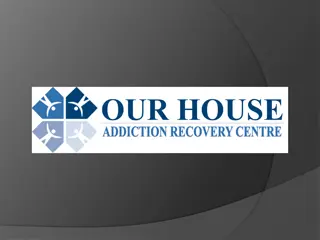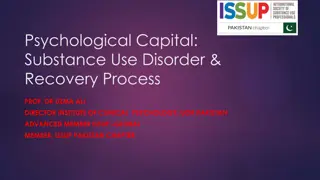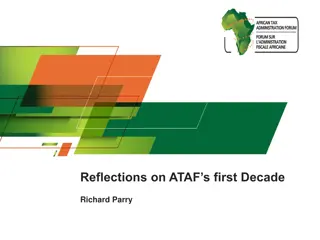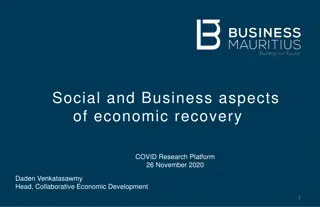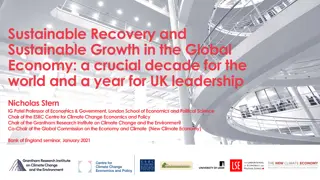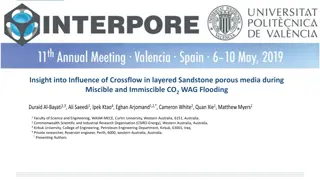The Impact of the RRN 2009 - 2019: A Decade of Recovery Research Network Reflection
Offering an objective and subjective commentary on the Recovery Research Network's (RRN) impact from 2009 to 2019, this presentation aims to assess the effectiveness of RRN activities and the significance of changes brought about by the network. Reflecting on the aims of RRN, which include creating new robust research around recovery and increasing access to existing research, the assessment includes evidence from over 20 RRN meetings and more than 100 presentations by national and international experts.
Uploaded on Sep 16, 2024 | 0 Views
Download Presentation

Please find below an Image/Link to download the presentation.
The content on the website is provided AS IS for your information and personal use only. It may not be sold, licensed, or shared on other websites without obtaining consent from the author. Download presentation by click this link. If you encounter any issues during the download, it is possible that the publisher has removed the file from their server.
E N D
Presentation Transcript
THE IMPACT OF THE RRN 2009 - 2019 Dr Tony Sparkes a.sparkes@bradford.ac.uk
PRESENTATION AIMS During this short presentation, I would like to offer both an objective and subjective commentary upon the impact of the Recovery Research Network (RRN) over the last decade. Ultimately, my aim is to carve a space in which we can join together and reflect upon the ways (personal and./or otherwise) in which the RRN has met its aims (or not!) As with recovery, impact is personal.
LOCATING IMPACT Impact assessment is a means of measuring the effectiveness of organisational activities and judging the significance of changes brought about by those activities. It is neither Art or Science, but both. (IFRC, 2019)
AIMS OF RRN The aims of the RRN were circulated following the first meeting held on the 23rd April 2009. 1. To create new, robust research around recovery 2. To increase access to existing research around recovery Of course the twin aims are not mutually exclusive; they are inextricably entwined.
TO CREATE NEW, ROBUST RESEARCH AROUND RECOVERY To create new, robust research around recovery. Through: Conceptual and empirical work The inclusion of a broad range of disciplines and perspectives An international platform Event-based Collaboration The co-supervision of PhD students A particular focus upon RCTs and SRs to ultimately advise clinical guidelines and shift the policy/practice culture
TO INCREASE ACCESS TO EXISTING RESEARCH AROUND RECOVERY To increase access to existing research around recovery. Through: A web-based resource promoting academic studies (in progress and/or those already published), forthcoming conferences and workshops (International/national) and internet resources RRN conferences/workshops to disseminate/increase access of research findings Networking
IMPACT EVIDENCE: RRN MEETINGS Please beware the thorny issue of causality when it comes to exploring impact. There have been 20 RRN meetings (June 2009 November 2018) Over 100 talks or presentations (not including panel discussions) from a broad range of national and international speakers, many of whom are experts, or have since gone on to be experts in their field. Over 50% of talks/presentations have been uploaded to the RRN web-site. This is noteworthy, especially since the website was a later addition. Over the past 5yrs (2014-18) over 70% of presentations have been archived.
IMPACT EVIDENCE: PRESENTATION TOPICS Topics have included: Research approaches, methods & implementation, Conceptual frameworks, Carers, Spirituality, Measuring recovery, Service user research, Older people, Care planning, Shared decision making
IMPACT EVIDENCE: PRESENTATION TOPICS Topics have included: Recovery-oriented practice (organisational and professional), Measuring recovery, service user research, Work, money and debt, Black and Minority Ethnic perspectives
IMPACT EVIDENCE: PRESENTATION TOPICS Topics have included: Experts by experience/lived experience, Early interventions/forensic services, Outcomes, Information technology , Critical perspectives, Coercion, Inequalities
IMPACT EVIDENCE: PRESENTATION TOPICS Topics have included: Peer support, Meaning and identity, Community networks and relationships These three broad areas have received the most attention over the last decade.
IMPACT EVIDENCE: EBULLETIN DISTRIBUTION 118 network members (RRN minutes 15/10/2009)* There were 875 listed members as of April 2019** Readership is currently drawn from service user researchers, people with lived experience, health and social care professionals (including managers), academics, third-sector agencies, statutory agencies, PhD students/students studying for a professional qualification (NB: this is not an exhaustive list ) What is notable however is both the intersectionality and the diversity.
IMPACT EVIDENCE: EBULLETIN DISTRIBUTION The ebulletin is currently posted to over 32 countries worldwide. Around two- thirds are posted to UK addresses, with the remainder posted internationally. Location England, Scotland, Wales, N Ireland, Jersey Australia, New Zealand Austria, Belgium, Czech Rep., France, Germany, Ireland, Italy, Netherlands, Switzerland, Spain Canada, USA, Mexico Denmark, Norway, Sweden Estonia, Montenegro, Turkey Israel Hong Kong, Japan, Thailand India, UAE, Uganda Post (%) 62.5 7.0 5.9 3.7 3.3 0.8 0.8 0.6 0.3
IMPACT EVIDENCE: EBULLETIN DISTRIBUTION As noted earlier, the readership is very broad. Readership Post (%) Third-sector 11.7 University/education 21.6 Statutory agency / professionally qualified / health and social care 32.6 SU/lived experience 5 Student 6.2 Note: the social and structural arrangements in one location cannot unproblematically be transferred from one context to another
IMPACT EVIDENCE: EBULLETIN DISTRIBUTION 80 Emails: Since June 2012, the ebulletin has distributed the findings from around 300 articles involving recovery related research. Findings are ordinarily in the form a fully referenced abstract, which (increasingly) also contains an embedded link or the DOI for ease of access. The overwhelming majority of this literature is peer reviewed work, covering a diverse range of journals, authorship and perspective.
IMPACT EVIDENCE: KEY AREAS A 10-year presence (face-to-face and/or electronic) 20 face-to-face meetings/over 100 presentations National and international speakers/attendees A diverse readership (both geographically and personally/professionally) A broad range of topics Collaborative/inclusive Over 80 ebulletins containing around 300 articles. The work of REFOCUS
A PERSONAL-PROFESSIONAL REFLECTION As the notion of recovery is personal, then the impact of the RRN also contains a subjective component. From my own perspective and whilst undertaking my PhD. The impact of the RRRN as: A source of support (practical and psychological) A fixed point to contextualise my own research A source of identity and belonging. A source of secondary socialisation Social connectivity? Academic resource
A PERSONAL-PROFESSIONAL REFLECTION 10 yrs later and from the perspective of a Social Work tutor, the impact of the RRN is visible in terms of: The rise of personal recovery within professional practice (a) External what understandings students arrive with. (b) Internal What understandings they leave with RRN in teaching RRN as a resource
IMPACT: A REFLECTIVE POINT It was discussed that organisational change would be a key challenge, there are issues of power and control and who owns the power to interpret a recovery focus service (RRN meeting 23rdApril 2009) Although from a US perspective, and in context of the positive strides made thus far, the above point is revisited by Davidson (2018) nearly a decade later. Davidson emphasises the need to privilege the broader determinants of mental health, alongside a rights-based agenda to better serve the possibility of personal recovery, at least as articulated by those with lived experience.
REFERENCES IFRC (2019) Impact assessment. The International Federation of Red Cross and Red Crescent Societies. https://www.ifrc.org/en/google-custom-search/?q=impct%20assessment [accessed: 20/04/2019] Davidson, L. (2019) Is there a future for recovery? World Association for Psychosocial Rehabilitation No.42, 10-13. [online] http://www.wapr.org/wp- content/uploads/2019/01/wapr_e_bulletin_dec_2018.pdf P ras, D. (2017) Report of the Special Rapporteur on the right of everyone to the enjoyment of the highest attainable standard of physical and mental health. Human Rights Council.
RRN AIMS Aims of the RRN The aims of the RRN were agreed at the first meeting in April 2009: 1 To create new, robust research around recovery This will involve conceptual and empirical work, importing critical tools from a range of disciplines (eg anthropological, historical, philosophical, sociological) and perspectives. Preliminary topics include conceptual understandings of recovery, methodological approaches, empirical studies, and approaches to changing organisation culture and professional practice. Specific tasks may include collaborations to produce new grant applications, holding events with international speakers, providing a meeting-point for researchers from different scientific areas (eg health services research, wellbeing, social inclusion, identity) to develop collaborative links, or co-supervising PhD students. A particular (but not exclusive) focus will be on developing evidence through randomised controlled trials and systematic reviews about key recovery domains (eg hope, empowerment, identity, personal responsibility, meaning, etc) with the goal of informing clinical guidelines and changing the policy and practice culture. 2 To increase access to existing research around recovery This may involve the development of a web-based resource of academic studies and internet resources, holding conferences or workshops to disseminate findings, or creating accessible syntheses of research.




